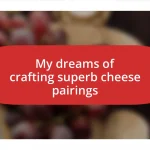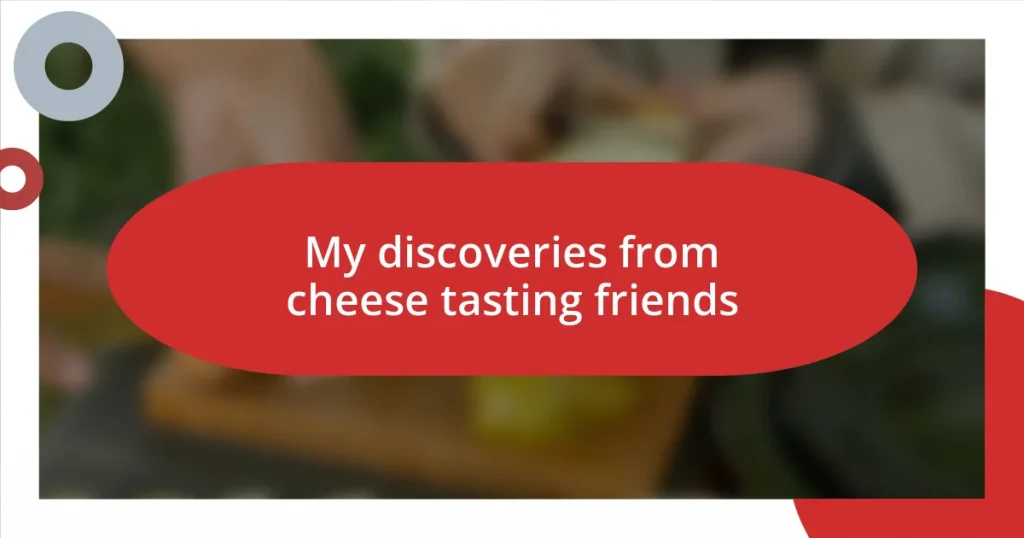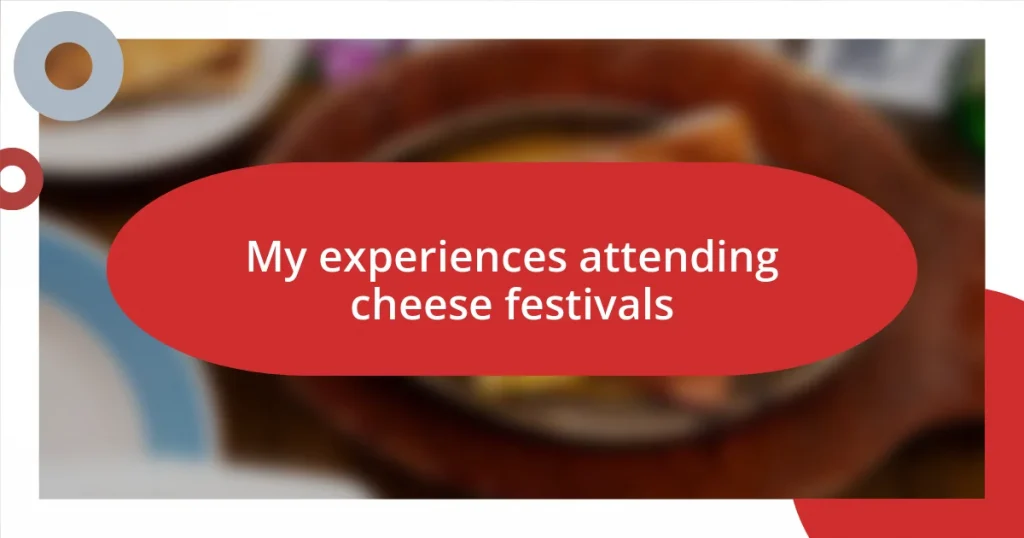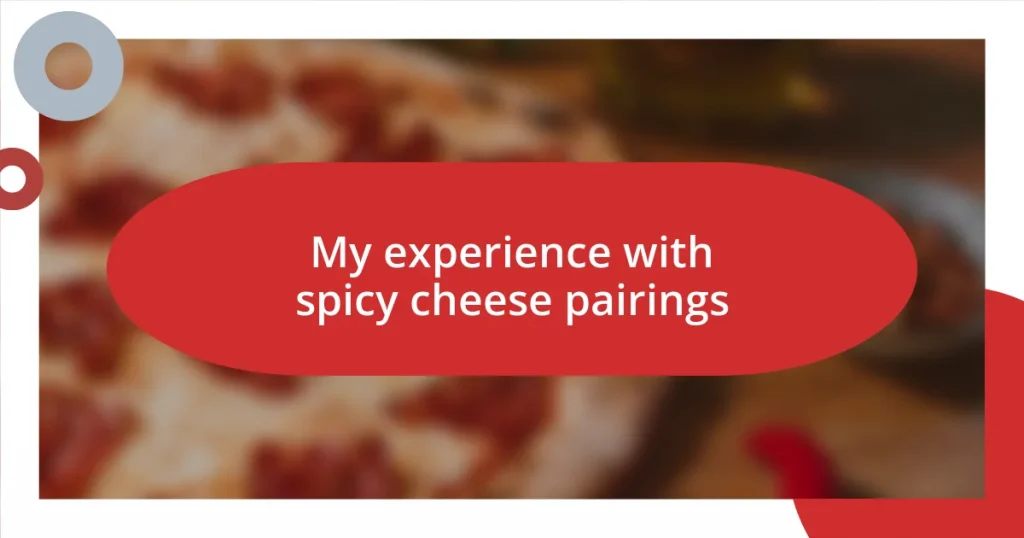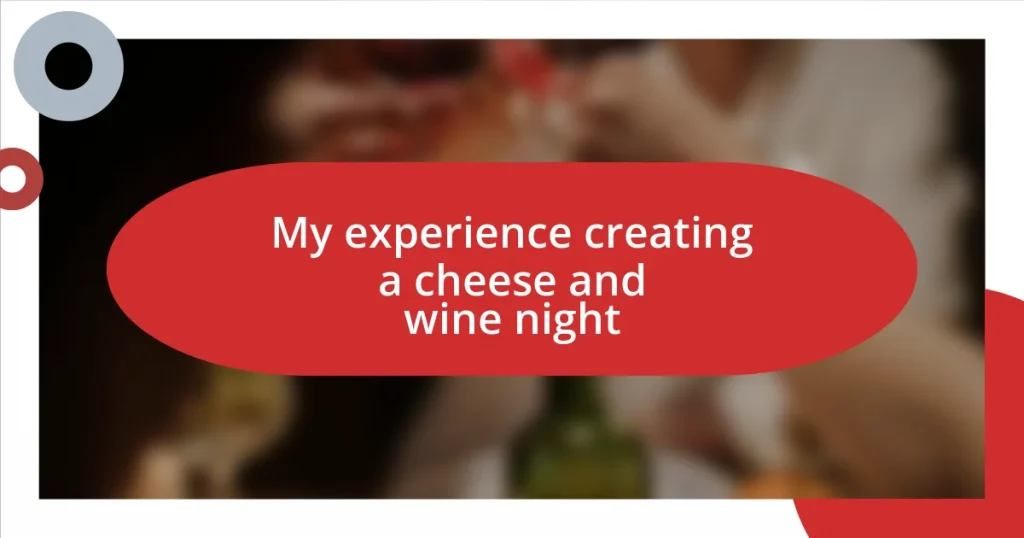Key takeaways:
- Engaging all senses—aroma, texture, and food pairings—enhances the overall cheese tasting experience.
- Identifying flavor profiles involves observation, small tastings, and considering textures and milk sources.
- Hosting a cheese tasting event fosters connection through ambiance, storytelling, and shared culinary exploration.
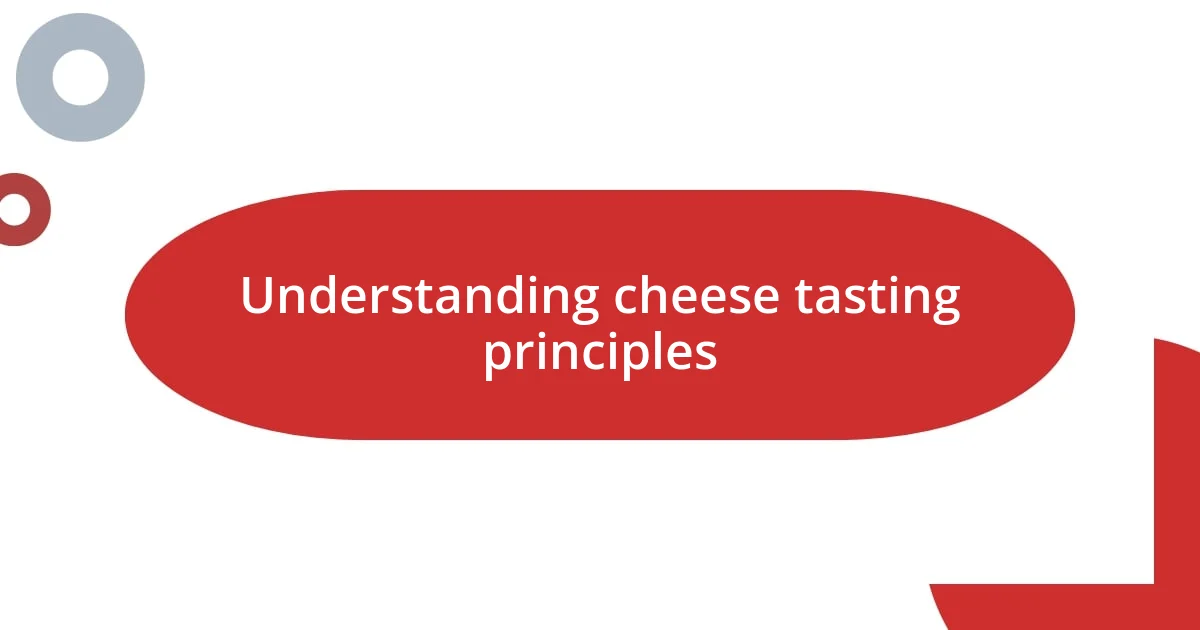
Understanding cheese tasting principles
When it comes to cheese tasting, one of the fundamental principles is to engage all your senses. I remember the first time I truly appreciated the aroma of a properly aged cheddar—its nutty and sharp scent filled the room, drawing everyone in. Doesn’t that make you curious about how much flavor can be hidden in just a smell?
Texture plays an equally crucial role in the tasting experience. I once sampled a creamy Brie that practically melted on my tongue, contrasting sharply with the crumbly texture of a blue cheese, which left a delightful tingle. Isn’t it fascinating how our perception of flavor can change drastically based on texture alone?
Lastly, I’ve learned that pairing cheese with other foods enhances its unique characteristics. For instance, pairing a tangy goat cheese with honey opens up a whole new range of flavors that dance together beautifully. Have you ever noticed how some combinations just feel like they were meant to be? Exploring these principles not only deepens your appreciation but also transforms how you enjoy cheese.
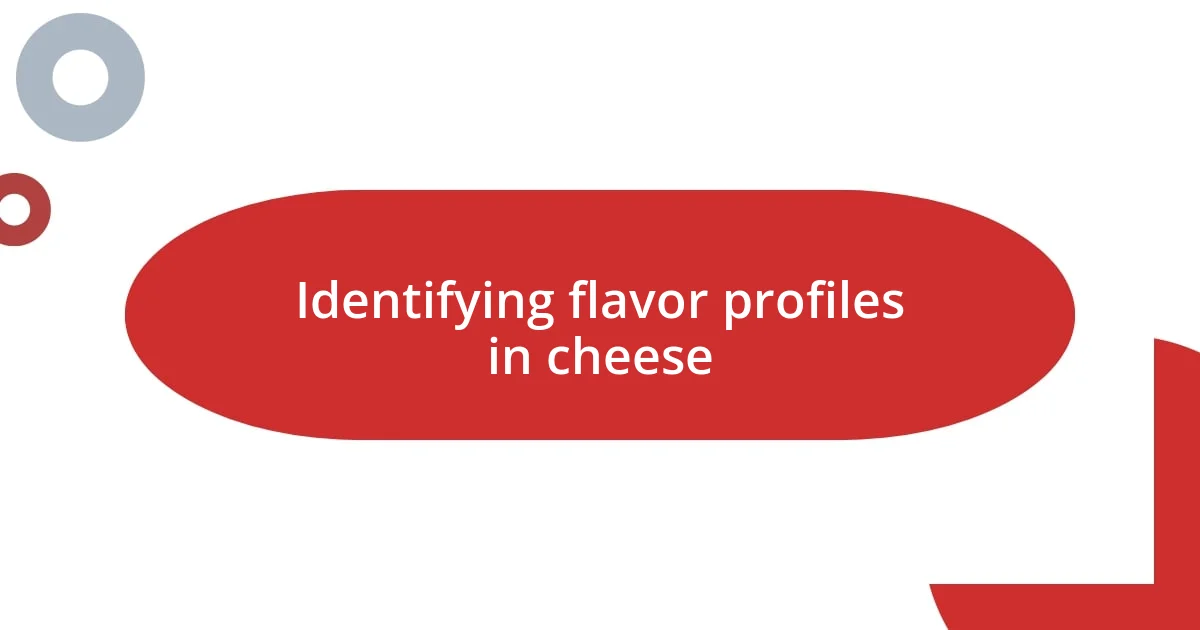
Identifying flavor profiles in cheese
Identifying flavor profiles in cheese often starts with observation and curiosity. The first time I tasted a robust Roquefort, I couldn’t help but be struck by its rich, salty, and tangy complexity. It reminded me that flavors can be layered and multifaceted, much like a fine wine. The more I focused on that initial bite, the more nuances I uncovered—hints of sweetness and earthy undertones that I hadn’t expected.
When trying to identify the flavor profiles in cheese, consider these tips:
- Smell before you taste: Aroma is a powerful indicator of flavor. In my experience, the pungent smell of a washed-rind cheese often precedes a surprisingly creamy and mild taste.
- Take small bites: This allows your palate to adjust and identify subtle flavors. I remember savoring a small piece of aged Gouda; the caramel and toffee notes revealed themselves slowly.
- Pay attention to texture: The way cheese feels in your mouth can drastically influence flavor perception. A silky texture might enhance the creaminess, while a crumbly texture may introduce a certain sharpness.
- Consider the milk source: The type of milk—cow, goat, sheep—will influence the cheese’s overall profile. For instance, goat cheese often carries a tangy zest that I find refreshing compared to the more buttery flavor of cow’s milk cheeses.
- Experiment with pairings: Just like how I discovered the delightful marriage of sharp cheddar with apple slices, the right accompaniment can elevate the flavor experience entirely.
Embracing these aspects can turn your cheese-tasting endeavors into a delightful exploration, leading to surprising discoveries.
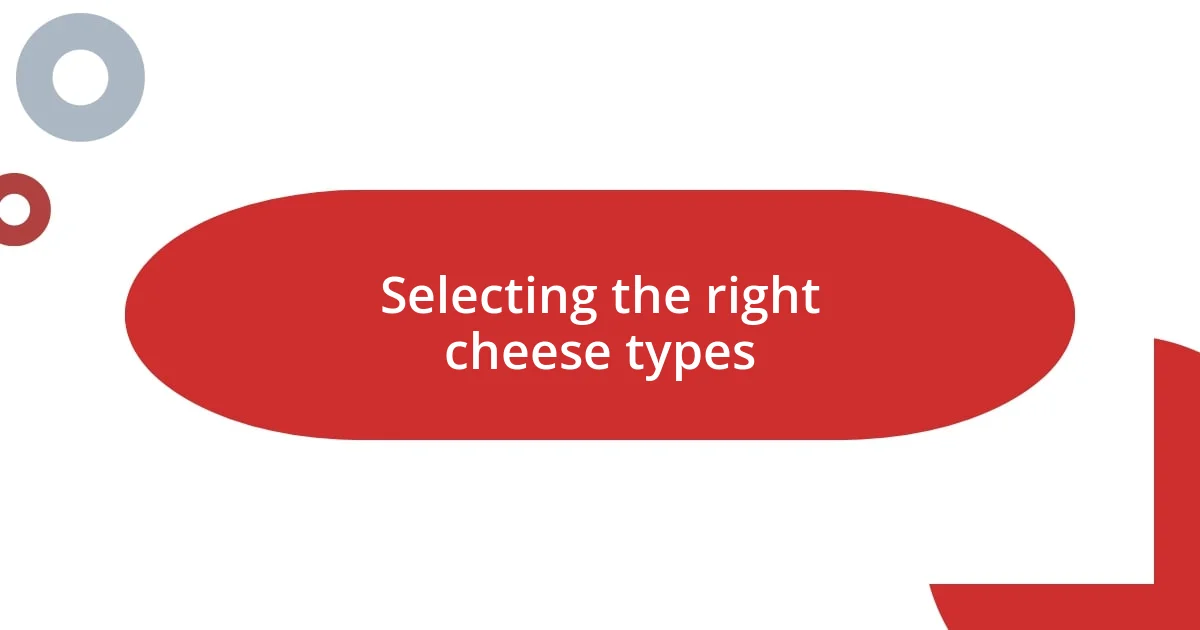
Selecting the right cheese types
Selecting the right cheese types is an adventure all on its own. I still recall a cheese-tasting event where we had an array of options—each one distinct and inviting. One of my favorites that evening was a nutty Gruyère, which paired perfectly with a crusty baguette. It’s remarkable how certain cheeses, like brie or gouda, can evoke memories or even create new ones during tastings.
When I think about selecting cheeses, I consider a balance between textures and flavors. For example, a smooth, creamy cheese pairs beautifully with something crunchy, like almonds. I often host gatherings where I spread out an assortment, letting my friends experiment. They started to understand how a tangy feta complements the crispness of fresh vegetables, igniting conversations and joyful laughter.
There’s also the importance of variety. Offering a selection that includes soft, semi-hard, and blue cheeses allows everyone to find a personal favorite. I remember my first encounter with a blue cheese—a bold, adventurous choice that I initially hesitated to try. However, once I paired it with some honey, my taste buds danced with delight, opening up a whole world of possibilities.
| Cheese Type | Texture |
|---|---|
| Soft | Creamy and luscious |
| Semi-Hard | Firm with mild bite |
| Blue | Crumbly with sharp flavor |
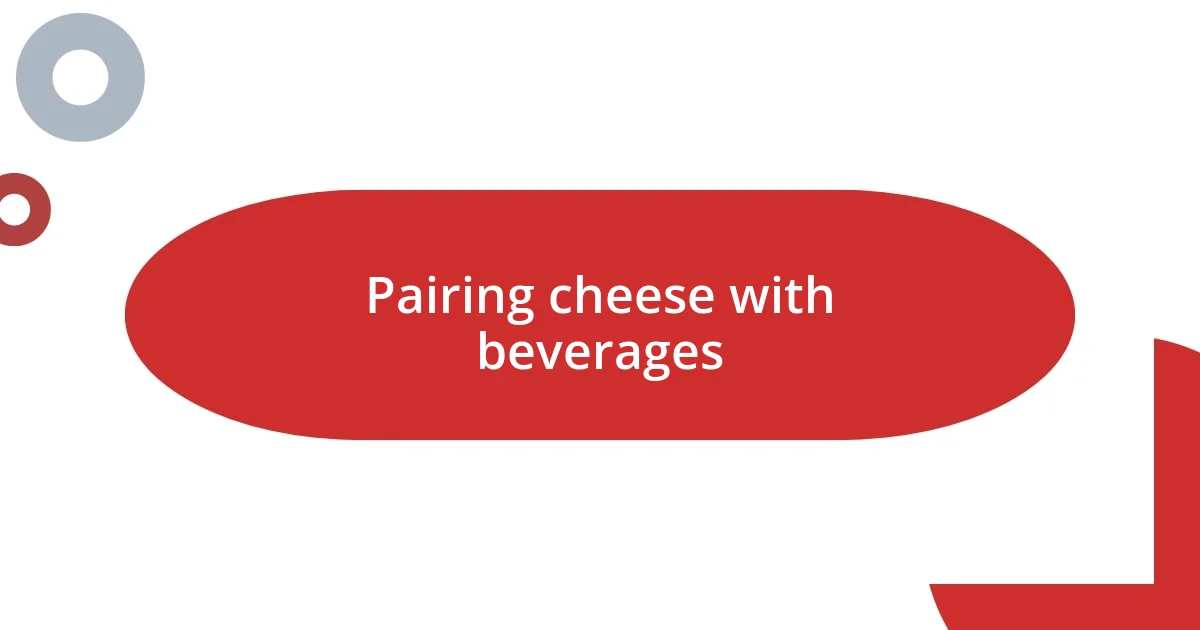
Pairing cheese with beverages
Pairing cheese with beverages can create a symphony of flavors that enhances every bite. I vividly remember a night when I paired a creamy Brie with a crisp Sauvignon Blanc. The wine’s bright acidity beautifully cut through the cheese’s richness, making each mouthful feel refreshing. Have you ever considered how a hint of fruitiness in a beverage can impact your perception of cheese? It’s truly eye-opening.
There’s a method to this delicious madness—sweet wines, like a late harvest Riesling, can be divine with blue cheeses. I once tasted a bold Stilton alongside a chilled glass of Riesling, and the contrasting flavors exploded in my mouth. The sweetness of the wine complemented the sharpness of the cheese, creating a delightful balance. It reminded me that even beyond the basics, combinations can often surprise you.
I also find that beer can provide a unique twist to cheese pairings. For instance, a well-crafted stout with its rich, roasted notes can enhance the nuttiness in aged cheeses wonderfully. I was at a gathering once, trying a pungent Havarti with a dark lager, and it was as if their flavors danced a waltz together. The key takeaway? Don’t be afraid to experiment—trust your palate, and you might discover a pairing that’s memorable and delightful!
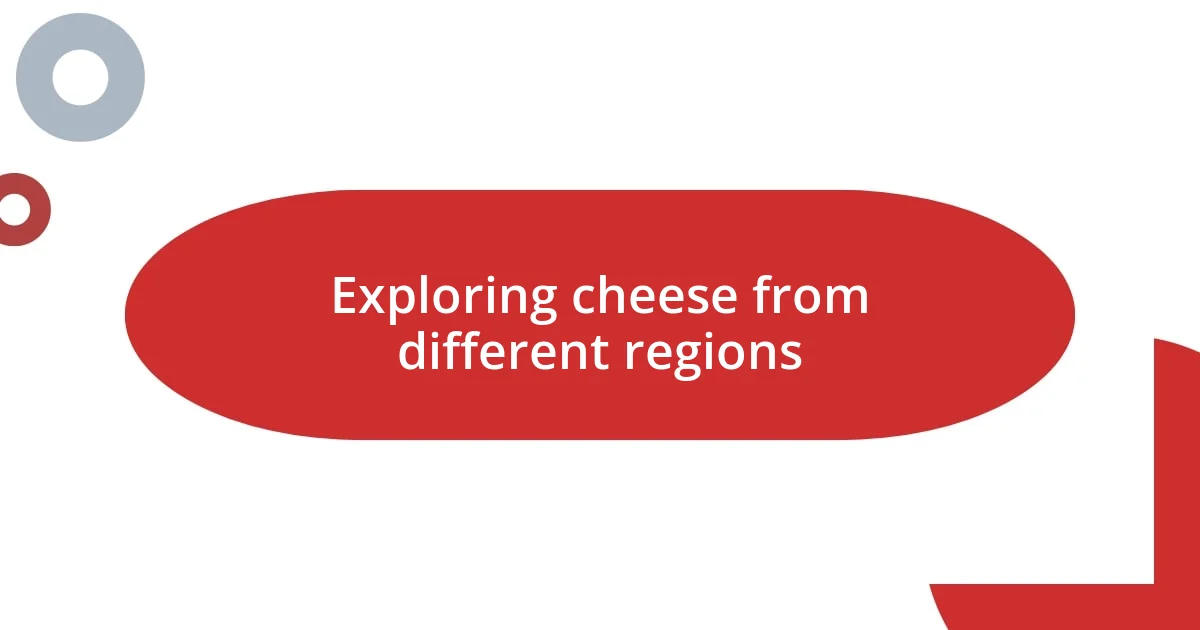
Exploring cheese from different regions
Exploring cheese from different regions can be like taking a culinary passport trip without leaving your home. I remember a delightful evening spent sampling an array of Italian cheeses, where I discovered how a crumbly Pecorino Romano from Tuscany could perfectly awaken my taste buds, contrasting beautifully with the rich creaminess of a triple crème from France. It’s fascinating how regional characteristics shape the flavors and textures of each cheese, inviting you to peek into the culture behind them.
During one of my tastings, we ventured into the realm of Spanish cheeses. I was immediately captivated by the intense and nutty flavor of Mahón, marked by its unique orange rind. This is the kind of discovery that gets your imagination racing—have you ever tasted a cheese so distinctly linked to a particular place that you could swear you felt the sun and sea with each bite? My experience with Mahón was like a mini-vacation to the Balearic Islands, making me want to dive deeper into the world of Spanish dairy.
Sampling French cheeses also opened my eyes to the richness of tradition. I can’t forget the time I savored a pungent Époisses, which left an unforgettable smell that surely lingered in the air long after we had finished. It was interesting to see how the strong aroma paired with a glass of full-bodied red wine created a harmony of flavors. This encounter made me appreciate the artistry behind each cheese variation; it’s almost as if the cheese carries the essence of its homeland, weaving stories of the land and its people, and transforming every tasting into an exploration of the world.
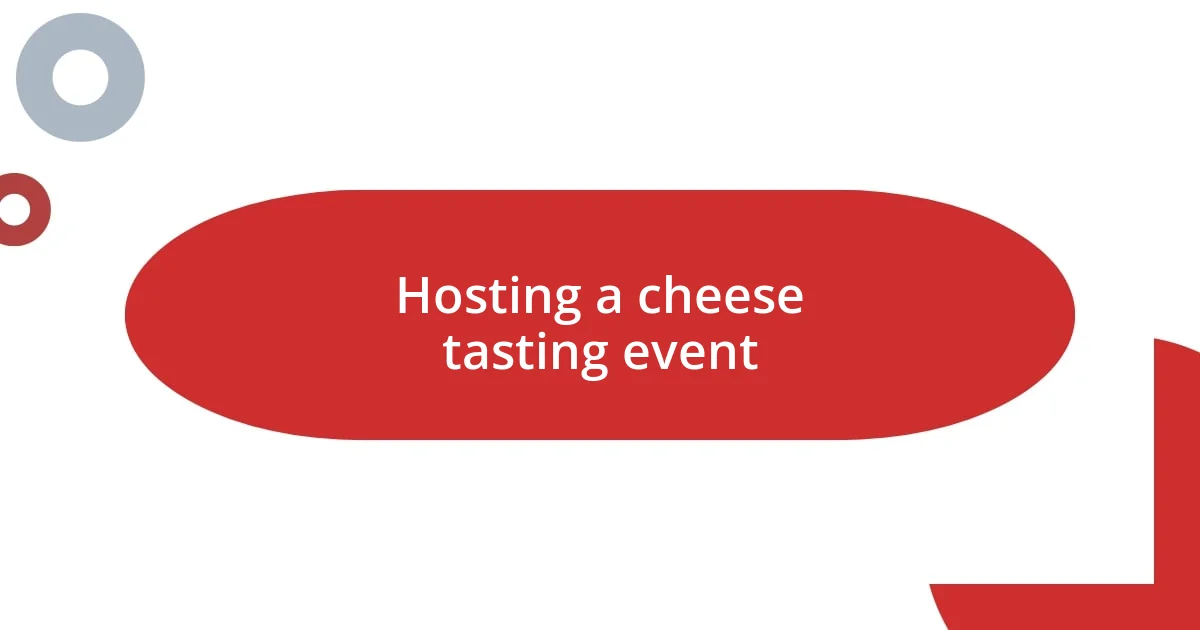
Hosting a cheese tasting event
Hosting a cheese tasting event is an experience filled with anticipation and creativity. I remember the buzz and excitement when I gathered a few friends to sample a selection of unique cheeses. We spread out a few rustic boards, adorned with colorful fruits and nuts, all while my heart raced at the thought of sharing these flavors and seeing the joy on everyone’s faces. Have you ever watched someone take that first bite and witness the delight in their eyes? It’s an unforgettable moment.
Setting the scene is crucial for a successful tasting. I often choose a cozy area, dimmed lights, and soft music in the background to foster a relaxed atmosphere. One time, I arranged candles on the table, and we chatted as we tasted, savoring the distinct textures and flavors of each cheese. This mix of ambiance and conversation created a feeling of intimacy, turning the tasting into more than just a meal—it became an experience. What do you think makes a gathering feel special? For me, it’s all about the connections we share over food.
Don’t underestimate the power of storytelling during your tasting. I’ve found that sharing the origins of each cheese can ignite curiosity and conversation among guests. For instance, I once shared the history of a tangy feta, rooted in Greek traditions, and suddenly, everyone was discussing their own travel experiences and favorite dishes. This added layer of engagement transformed the evening into a rich tapestry of flavors and stories, reinforcing how food brings us together. How do you think stories influence your own culinary experiences?









